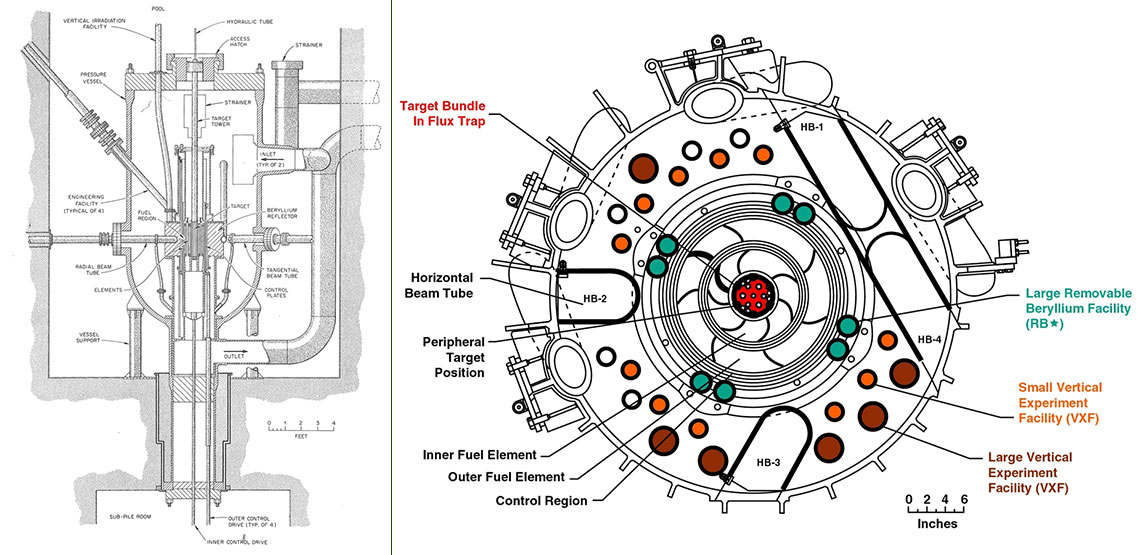High Flux Isotope Reactor Technical Parameters
HFIR is a beryllium-reflected, light-water-cooled and -moderated, flux-trap type reactor that uses highly enriched uranium-235 as the fuel. The image on the right is a cutaway of the reactor which shows the pressure vessel, its location in the reactor pool, and some of the experiment facilities.
The preliminary conceptual design of the reactor was based on the "flux trap" principle, in which the reactor core consists of four annular regions of fuel surrounding an unfueled moderating region or "island" (see cross section view). Such a configuration permits fast neutrons leaking from the fuel to be moderated in the island and thus produces a region of very high thermal-neutron flux at the center of the island. This reservoir of thermalized neutrons is "trapped" within the reactor, making it available for isotope production. The large flux of neutrons in the reflector outside the fuel of such a reactor may be tapped by extending empty "beam" tubes into the reflector, thus allowing neutrons to be beamed into experiments outside the reactor shielding. Finally, a variety of holes in the reflector may be provided in which to irradiate materials for later retrieval.
The original mission of HFIR was the production of transplutonium isotopes. However, the original designers included many other experiment facilities, and several others have been added subsequently.

Cross sections through HFIR (left) and the HFIR core (right)
Experiment facilities available include:
- Four horizontal beam tubes, which originate in the beryllium reflector
- The hydraulic tube irradiation facility, located in the very high flux region of the flux trap, which allows for insertion and removal of samples while the reactor is operating
- Thirty target positions in the flux trap, which normally contain transplutonium production rods but which can be used for the irradiation of other experiments (two of these positions can accommodate instrumented targets)
- Six peripheral target positions located at the outer edge of the flux trap
- Numerous vertical irradiation facilities of various sizes located throughout the beryllium reflector
- Two pneumatic tube facilities in the beryllium reflector, which allow for insertion and removal of samples while the reactor is operating for neutron activation analysis
- Two slant access facilities, called "engineering facilities," located on the outer edge of the beryllium reflector. In addition, spent fuel assemblies are used to provide a gamma irradiation facility in the reactor pool.


